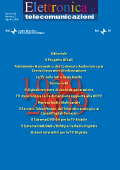 |
Cover |
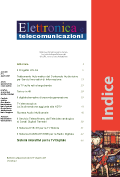 |
Contents |
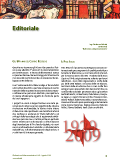 |
G.F. Barbieri
Editorial |
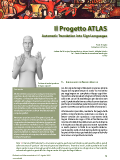 |
Atlas Project
by P. Prinetto, A. Del Principe, C. Marino, M. Rossini, M. Visintin
ATLAS is a technology bridge between the cognitive and the most advanced information technologies.
The project, co-financed by the Piedmont Region, is aimed at developing innovative services for the deaf offer the opportunity to follow and understand the transmission of media through the automatic translation from Italian written into Italian Sign Language (LIS), displayed through a virtual actor generated via computer-animated graphics.
Through these tools, the project has, for example, the objective of prividing the deaf the means to understand television broadcasts, web pages and movies reproduced via physical media, like DVDs, through an interpreter that translates virtual contents into LIS . The interpreter, properly customized, can be viewed on different kinds of display, from TV screen to computer, from phone to handheld devices.
|
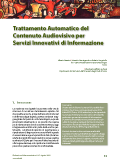 |
Automatic Elaboration of Audiovisual Material for Innovative Informtion Services
by A. Messina, M. Montagnuolo and R. Borgotallo
This article presents the contents of one of the demonstrations, held Torino in conjunction with Prix Italia 2009, concerning technologies and systems for automatic elaboration of audiovisual material for innovative informative services. During the demonstration the main functionalities of the systems developed at Rai Centre for Research and Technological Innovation and supported by Rai Archives will be illustrated. The article provides a short analysis of the motivations underlying these developments and some descriptions about the used technologies, as well as some key scientific references for the interested readers. |
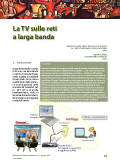 |
TV & Broadband Networks
by R. Iacoviello, S. Mantovano, P. Sunna
Hybrid integrated TV and set-top-box that can receive both linear broadcast TV (e.g, DTT, Sat,…) and broadband content (e.g, Internet via wired/wireless connection,..) are increasingly becoming available off-the-shelf. These hybrid scenarios present then various challenges and opportunities for broadcasters that can complement their offer with truly video on demand and interactive services, avoiding third parties intermediation (e.g IPTV operators) and maintaining brand and user experience control. This is an overview of the main bodies who are looking at how to specify technical standard enabling synergies between broadcast and broadband world. In this context, the Research Centre and Technological Innovation has developed two demos running on hybrid set-top-box and integrated tv set based on catch-up TV, VoD Catalogue & Search functionalities and other web services provided through the broadband interaction channel. |
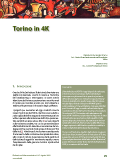 |
Torino in 4K
by D. Airola, G. Dimino, M. Visca
Nowadays HDTV is available for home end users. The industry and the research activities in broadcasting are looking toward a future scenario where higher resolutions (both in spatially and in temporally domain) will be broadcasted.
The 4096 horizontal pixel resolution - 4K format – belongs actually to the Digital Cinema domain.
The interest of Rai in the 4K format consist actually of experimental activities carried out at the Centro Ricerche Innovazione Tecnologica (CRIT) oriented to the assessment of 4K format and related technologies from a broadcaster point of view for high quality productions. From shooting to post-production, from material handling to H.264 encoding prior broadcasting, the result is a challenge on each step of the production chain.
Torino in 4K is the first result of the joined efforts that CRIT and the Rai Production Center in Torino presented during the demonstration “Il Centro Ricerche: 80 anni di tecnologia al servizio della Radio e della TV” held at the l’Auditorium Rai during the 61st edition of Prix Italia in Torino. |
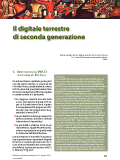 |
Digital Terrestrial TV: the Second Generation
by A. Bertella, V. Mignone, B. Sacco, M. Tabone
In 2008 DVB has defined the DVB-T2 standard, with the objective to deliver HDTV services to the users, with an optimised use of the frequency resources. The DVB-T2 system performance approaches the theoretical limit, allowing an increase of the channel capacity up to and beyond 50% with respect to DVB-T. The result is that DVB-T2 allows broadcasting 4 HD programs in HD in an 8 MHz terrestrial channel. The move towards DVB-T2 will not require any modifications in the transmitting sites as well as in the domestic receiving installations, but the replacement of set-top-boxes, that may simultaneously upgrade to the decoding of HDTV, however not possible by most current DVB-T sets.
The Centre for Research and Technological Innovation of Rai (CRIT) participated to the technical activities of the DVB ah-hoc-group which standardised DVB-T2.
In Italy, the most significant steps of the history of DVB-T2 are represented by the first transmission of a DVB-T2 multiplex (19 November 2008) and the T2 Plug Fest (February- March 2009), with the participation of several DVB-T2 equipment manufacturers.
Prix Italia represents a new important step for DVB-T2, where a wider public will appreciate its extraordinary technical achievements and the huge improvements with respect to DVB-T. |
 |
Stereoscopic TV -
The 3rd Dimension Added to TV
Steroscopic TV - The 3rd Dimension Added to HDTV
by M. Muratori
The cinematographic industry has renewed its interest towards stereoscopy. Unlike the past, nowadays the interests of cinematogaphers strongly involve the broadcasters because of two main reasons: the consumer TV sets are used also for the “home cinema” and the TV programming shows many films, which more and more often will be available in 3D format too.
The interest of Rai in the stereoscopy mainly consists in a research and development activity carried out at the Centro Ricerche e Innovazione Tecnologica (CRIT) with the aim of defining a complete production chain, from shooting to display.
This activity is enriched by experimental “on-field” productions carried out with the Centro di Produzione of Torino (CPTO). One among these produced the clip showed during the demonstration “Il Centro Ricerche: 80 anni di tecnologia al servizio della Radio e della TV” held at the Rai Auditorium in the occasion of Prix Italia 2009. |
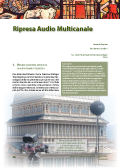 |
Multichannel Audio
by L. Scopece
HDTV services will offer viewers an immersive perception of reality, and audio will play a fundamental role in this involvement.
Holophony is one of the possible recording techniques which allows for emotional multi-channel audio quality.
On the occasion of the 80th anniversary of Rai Research in Turin, demonstrations, including the future HDTV-3D and HDTV-4K, adopt multichannel holophonic recording. |
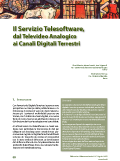 |
Televideo Rai, Telesoftware Service over Digital Terrestrial Television
by G. Alberico, M.Rossini, L. Vignroli, M. Farrace
The migration of services from the analogue era to the digital age is now an ineluctable process, the service called “Telesoftware Teletext Rai” is ready to take this improvement. With the availability of new tools and new forms of distribution the “content” becomes the key-value on which to invest for a new offer to the end user. The convergence of these two aspects leads a natural evolution of a new data services to the citizen, with particular attention to the physically disable user, which, by exploiting the resources made available by digital terrestrial channel, may break down existing barriers and bring the user to a simple content access. Technology at the service of innovation has led to the study and implementation of a solution for the “broadcast” distribution of multi-media content on digital terrestrial channel.
|
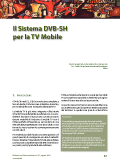 |
DVB-SH System for Mobile TV
Il Sistema DVB-SH per la TV Mobile
di P. Casagranda, A. Gallo, S. Ripamonti
An experimental, demo platform of DVB-SH (Digital Video Broadcasting to Satellite Handheld) technology has been implemented in Turin area during 2008 and 2009, achievement of the close cooperation of Alcatel-Lucent, Rai - Centre for Research and Technological Innovation, H3G and Eutelsat.
The main purposes of this trial were the evaluation of DVB-SH performance in different environments (indoor, outdoor, on the move...) and the validation of developed radio-planning techniques.
|
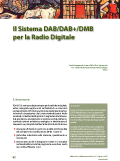 |
DAB/DAB+/DMB System
for the Digital Radio
Il Sistema DAB/DAB+/DMB per la Radio Digitale
di P. Casagranda, A. Gallo, S. Ripamonti
The Centre for Research and Technological Innovation (CRIT) is carrying out a trial of DAB/DAB+/DMB technology in the Turin area, aiming to test new services, specially for mobile users. In the past, the Centre for Research has accomplished, in close cooperation with Raiway, an SFN (Single Frequency Network) transmission network located in Piedmont and Aosta Valley, allowing to identify the real system performances, both in fixed and mobile reception conditions, during a two years trial.
|
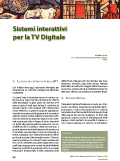 |
Interactive Systems for Digital TV
di M. Visintin
Digital Terrestrial Television in Italy has adopted the MHP standard for interactivity. Just as the conversion from analog to digital of the signal is the first step towards High Definition TV, the presence of MHP in DTT terminals allows to raise the “analogue” teletext service to new levels of presentation and interactivity.
But how to lead the user of traditional Televideo in this transition?
Digital Televideo developed by the Centre for Research and Technological Innovation of Rai (CRIT) intends to be the starting point of the evolution of this very popular service, which will soon also have at its disposal high-resolution terminals connected to broadband networks. |